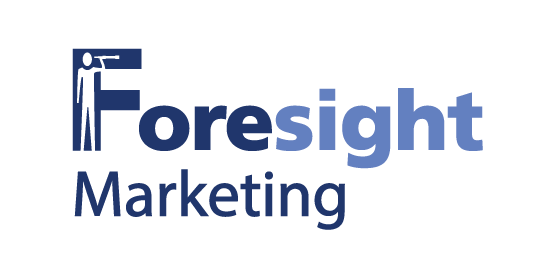Every company is faced with the prospect of identifying new markets and developing new products – the equivalent of braving new worlds. Market research is the vehicle for this discovery.
Market research is the systematic process of collecting, analyzing and presenting objective, useful marketing information for problem-solving and decision-making. Despite this promise, many executives view market research as a luxury or as an avoidable expense, using as their defense such comments as, “our sales team is talking to customers every day; they report back what the customers want.”
If only obtaining reliable customer data were that easy. Spoiler alert – it’s not. Why the belief that market research can provide a positive impact? Here’s an example of a company failure driven by ignoring market research.
A client called me in to assess why their new, melanoma removal technology was not gaining market traction. This product used the simple process of pressing the thumb and forefinger together on two clips to completely remove a Level 1 melanoma, replacing “the punch,” which had been developed in the 1930s. The excised specimen was sent to pathology for assessment, avoiding the cost of a second lesion excision. Although more expensive for dermatologists, the new technology was priced well within the reimbursement allotted for the procedure.
My game plan started by reaching out to the company’s target customers. To my surprise this was the first time the company asked customers about their technology (this is not all that uncommon for people who are convinced they’ve solved a customer’s problem).
My market research discovered that although dermatologists were disinterested in the client’s product, they were extremely interested in the next generation product; which the company had placed on the back-burner. It removed Level 2 melanomas. The company executives had opted to develop the faster to market Level 1 product. By the time my report was submitted, the company could not afford to develop the second-generation product. It eventually closed down, having spent $4M on an unwanted product.
As this example shows, market research provides the facts for great marketing decision-making. Market research is the best way to make sure that a company’s products align with customer needs. It helps the business understand competitive activity and the market niches with the best revenue growth opportunity. Market research can measure the effectiveness of product positioning or customer support services.
One form, qualitative market research, uses observation and open-ended questioning to gather in-depth insights. Qualitative research provides directional, not absolute feedback data. It answers the what, who, how and why for decision making. The most common qualitative research techniques are focus groups and in-depth interviews (IDIs).
What are some of the keys to effective qualitative market research?
Set objectives
Setting research objectives provides a guide for the questioning posed to research participants. Once articulated, objectives keep questions focused. Without the objectives in mind, moderators can wander off target during the normal course of a discussion. With the objectives in mind, the moderator is less likely to stray.
Lay out a market research plan and data collection instrument
Planning and organizing research helps ensure successful achievement of the market research objectives.
The first step in establishing a plan is to identify the research technique needed – IDIs or focus groups. Use IDIs when: 1) dealing with thought leaders (who would be impossible to coordinate into one focus group), 2) needing to delve into very complex subject matter, where interruptions from others would hamper understanding, and 3) trying to uncover cutting edge ideas.
Focus groups are usually conducted with community-based clinicians and are useful when trying to identify: 1) valuable product features and benefits, 2) impacts on workflow or 3) validating cutting edge ideas. Select focus groups when group thinking can add to understanding or when participant responses could build on one another to create greater understanding.
The first step in developing the research plan is identifying the main topics. Topic order depends on the: 1) degree of importance, 2) avoidance of participant bias during later research questions, and 3) level of topic complexity. When the topic is complex, the moderator should start by asking simpler questions to get the respondents in the proper frame of mind.
Next, plan the amount of time to spend on each topic. Unfortunately, there is NEVER enough time to cover everything. Leave the least important questions to the end, just in case the research runs long.
Then start writing the research questions for each topic. Qualitative research questions should be: 1) open-ended, 2) designed to ask only one concept at a time, 3) have been tested for clarity. Remember, the most important question is always “why”?
Questions in the introductory section ask participants to identifying themselves. This gets them comfortable talking and establishes credibility among group members. Don’t dwell on detailed demographics. Instead, ask participants something simple about your topic such as problems they’ve encountered. I like asking about the most difficult or worst experience they’ve had when dealing with the clinical condition addressed by the product.
The second section should delve into the disease condition or treatment approach problems.
Then ask participants about the company’s product. Here, the first questions should focus on the problems experienced with existing products. Ask generic questions about important features. Once you understand these respondent perceptions it’s safe to expose them to the product and ask specific questions.
The closing section should get the participants to validate the important concepts from the session.
Conducting the research
The moderator’s role in conducting qualitative market research is to glean the most information out of the participants. This requires more than just asking questions. The moderator needs to look for clues when to push a participant for greater elaboration, or when to move on.
Delay asking corollary questions too soon. Pause to generate a more detailed response because many participants cannot tolerate silence. Note when a participant pauses during a response. A pause means the participant is thinking, so exploring their thoughts can be particularly insightful. Body language and facial expressions are cues that should be followed-up later to glean greater understanding. Don’t be afraid to pursue a line of questioning if a unique concept arises, or challenge respondents’ replies to test their strength of conviction.
Analysis and reporting
Analyzing participant responses is required to ensure that the company gets the most value out of the research. Analysis is more than summarizing the responses.
Organize responses according to respondents who like or dislike the product. Compare these responses to questions asked throughout the session. For example, are participants who like your product more likely to have used a certain manufacturer’s product? Do the people who don’t like it have a high treatment success rate? Search for response consistencies or inconsistencies to see if clues can explain the rationale for interest in your product.
Great qualitative market research should result in an exposure of fundamental issues impacting the future of the product / company that will generate discussion and business decision-making. It provides guidance to companies bravely seeking out new worlds.

